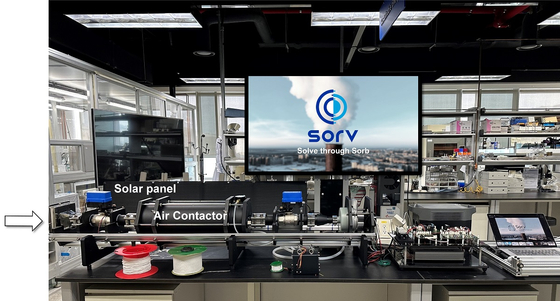A group of KAIST researchers have developed a carbon capture device that operates solely on electricity that is set for commercialization soon.
The team, led by Prof. Koh Dong-yeun, says its direct air capture technology is the industry’s first to carry out the process purely with electricity, including that sourced from renewable energy.
“[Electrification] guarantees geographical flexibility, as it can be deployed in any location with access to electricity,” the team said in a statement.
“It is expected to play a significant role not only in capturing carbon dioxide [CO2] from the atmosphere, but also to be mass-utilized in major sources of carbon dioxide emissions, such as thermal power plants, cement factories and steel mills.”
The adsorbent created by the team boasts a large surface area compared to its size, smaller than conventional devices, allowing for more efficient adsorption, and is structurally stable enough for repeated use.
The cylindrical device is 30 centimeters (11.8 inches) in width and 1.5 meters (5 feet) in length.
Currently, the device can process an average of 1 to 3 kilograms of CO2 per day. Within the year, the team aims to scale up the technology to capture 10 kilograms, with an ultimate goal of more than 1 ton per day.
The commercialization date has not been disclosed yet, but it will be done so under Sorv, a startup specializing in carbon capture and headed by KAIST Ph.D. researcher Kim Kyu-nam.
BY LEE JAE-LIM [lee.jaelim@joongang.co.kr]





